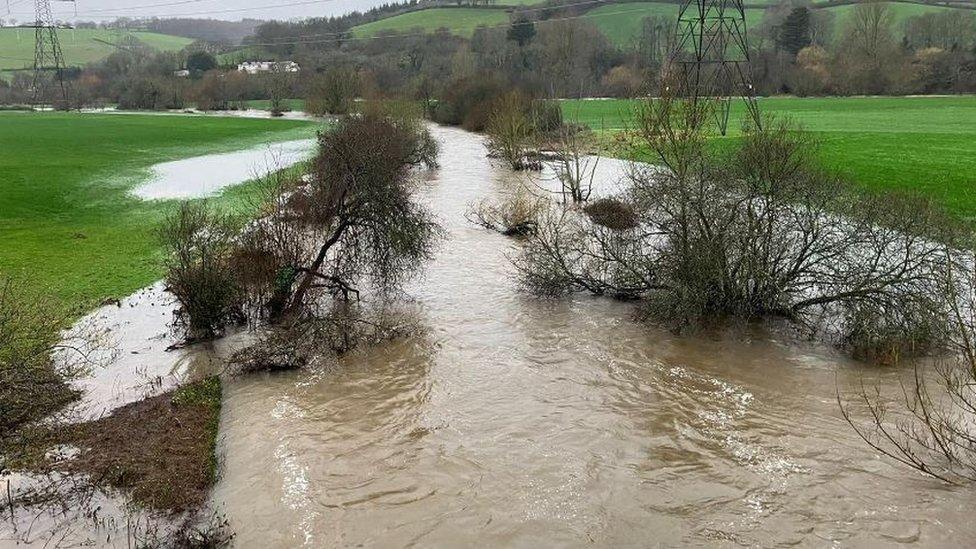How El Niño is delivering a sodden spring to Devon and Cornwall
- Published

The weather across the south-west is linked to the rest of the world
Spring 2024 has been unusually mild, but also very wet across the south-west of England.
While temperatures were above average throughout the UK, February has been a particularly warm month across Devon and Cornwall, with mean temperatures more than 3C above the long-term average.
The region had the highest February mean temperature on record and it was the wettest on record.
March has also been exceptionally wet. Average rainfall for Plymouth in March is between 70-80mm - but, so far this month, the city has had 165mm of rain.
The yearly total so far is 677mm - more than half of the rain we would normally see annually.

Burrator Reservoir near Plymouth is at 100% capacity
Monday's rain was exceptional - 50mm is not a normal day in March.
On Dartmoor, the total rainfall this year is at 1384mm - just short of the rain the moors would normally see in a whole year.
So why is it so wet? Is climate change to blame?
It can't all be attributed to climate change, but that is a consideration.
El Niño disruption
The weather across the south-west is linked to the rest of the world - what happens in Peru can influence the weather in Truro and Exeter.
A weather phenomenon called El Niño off the west coast of Peru is disrupting the trade winds globally, as well as the jet stream, external.
Added to this, sea surface temperatures around the south-west coastline are 2-3C warmer than average, giving low pressure systems more energy and enabling greater rainfall totals.
This winter, El Niño has been strong, resulting in milder and wetter conditions across the UK, as well as frequent areas of low pressure bringing rain, especially in the last three months.
Rainfall observations show a large variability in annual, seasonal and decadal rainfall, but it has generally become wetter, particularly during winter.
Climate projections indicate, on average, winters will continue to become wetter and summers drier, though natural variability will mean we will continue to see individual years that do not follow this trend.
Reservoir levels
As the atmosphere warms, it can hold more moisture, roughly 7% more per 1C of warming.
This brings a risk of increased frequency and longevity of heavy rainfall events in the future, particularly during winter if greenhouse gas emissions continue to rise.
What's the upshot of the rain? Reservoir levels are nearly full.
According to South West Water, Roadford reservoir is full, as is Wimbleball, Stithians and Burrator, while Colliford on Bodmin Moor is 95.1% full.

Follow BBC Cornwall on X (formerly Twitter), external, Facebook, external and Instagram, external. Follow BBC Devon on X (formerly Twitter), external, Facebook, external and Instagram, external. Send your story ideas to spotlight@bbc.co.uk, external.
- Published2 March 2024

- Published1 March 2024

- Published27 December 2023
